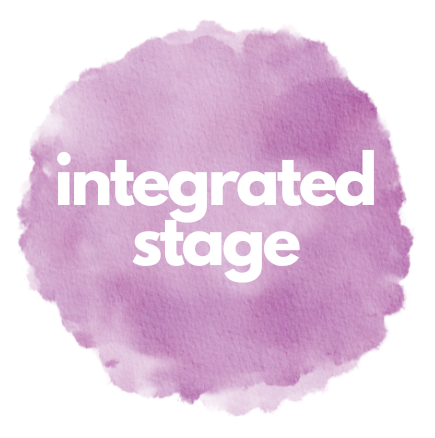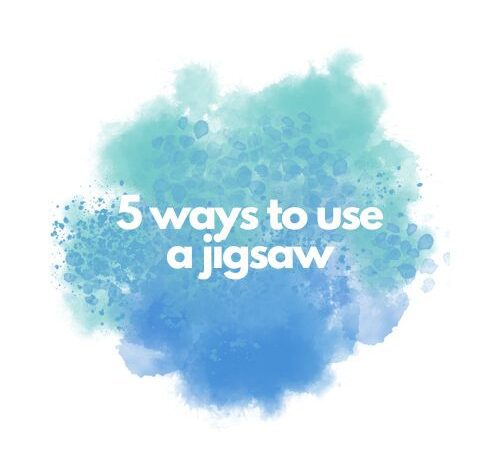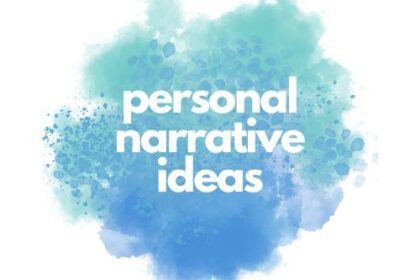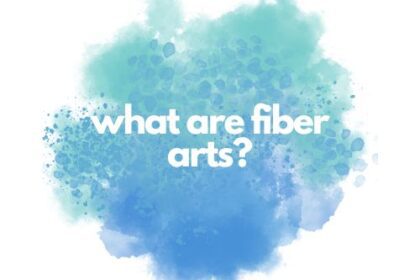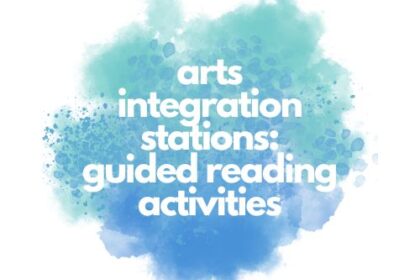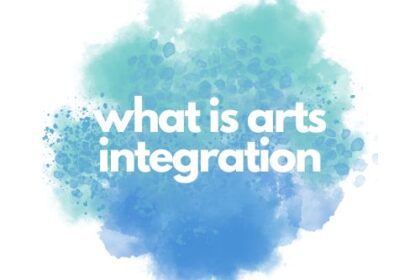Do you know what a jigsaw is? I mentioned it in this post as well, but it’s one of my favorite high-engagement activities. Read on for 5 ways to use a jigsaw.
How Do I Structure a Jigsaw?
This activity is cooperative learning at its finest, in my opinion. I first read about it in Marcia L. Tate’s Worksheets Don’t Grow Dendrites.
In her book, Tate suggests that the students in the group each be assigned a different part of the chapter, selection, or unit of study to read and study and become the expert. Each expert then teaches and quizzes his/her groupmates.
In my own classroom, I group my students by a topic. Together, they become the experts. They may be studying a specific person in social studies, an area of technical theatre, or a section of text. Then, they teach the class with their knowledge.
While they’re teaching, the students are taking notes in their journals and I’m taking notes on the board as an additional visual. I tell the class that I’m the teaching assistant today.
If there are any misconceptions that I didn’t correct in the research phase, I correct them here so the whole class has accurate information.
Either way, the learning is directly in the students’ hands and you, the teacher, become a facilitator. I love how empowered the kiddos feel and the learning is very deep in this activity.
You can also uplevel this by providing a rubric for the activity so students can self-assess along the way.
WHEN to do a Jigsaw?
I find that Jigsaws make excellent introductory activities.
I think it’s because it’s like giving students a detective kit. And who doesn’t like being a detective?!
Honestly, the engagement from this activity is a lot like escape room engagement (without the prep work!).
Students are able to get excited about the subject matter by learning about it cooperatively and then becoming experts. Their egos get a further boost from becoming the teachers rather than the students, too.
#1: ELAR- Types of Figurative Language
Figurative language is one of my ELAR jams. It’s so fun to teach and hear what the kids come up with!
In a jigsaw that foucses on the types of figurative language, the students, I approach the jigsaw in the way that Tate approaches it (above). Each student within the group would be assigned a different type of figurative language.
When using the Tate model, I typically see it as a great review activity, either mid-lesson cycle or at the end. Using it as a mid-cycle, it would be sandwiched between introducing the topic and applying the concepts of the topic to an actual text.
Once the expert teaches the rest of the group, the group can write and illustrate an example of either their or another group member’s type of figurative language.
This entire activity should take about 30-45 minutes, depending on how many terms you’ve given them.
Bonus here? As you walk around, you can hear the misconceptions and correct them, you’ve got a visual exit ticket, and you can use it to make a bulletin board display! This is also something you can do in a station.
#2: Science- Forms of Energy
Forms of energy seems to surprise my fourth graders every year. They’re amazed at hydropowered things and impressed by mechanical energy.
For this jigsaw, I’d use my typical classroom approach, where each group is assigned a form of energy and I’d use it as an introduction lesson.
I’d give students a list of resources in their LMS (we use Canvas in my district) using BrainPOP videos, books I pulled from Epic!, and physical library books as well. I may also use Discovery Education and Britannica Student, if applicable.
Then, they’re off! As they research and discuss in their think tanks, I walk around the room and correct misconceptions, offer assistance on trouble areas or clarifying vocabulary words. I love this part, because I see the learning in real time.
This part takes about 30 minutes and I want them to research and have a general idea of who is going to present what information aloud to the class. Then, I usually allot 7-12 minutes for each group to teach the class whole-group.
#3: Math- Properties of Multiplication
Since each property of multiplication should be given equal attention, I would again use my typical approach to jigsaws and I would begin my multiplication unit with this.
In this case, I would have a group for the Identity Property, the Multiplicative Property of Zero, the Commutative Property (this is an example based on my 3rd graders’ curriculum) each. Again, I would have an assignment in their LMS that listed resources for each property.
Instead of teaching the class as in the previous group, I’d have them design an anchor chart of their property on a sheet of 11×17 paper to use as they teach the class.
I’d have them to the research and anchor chart in one 30-minute period. Later that day I’d photograph each anchor chart and then laminate them altogether.
Why? I use the photos in projects like this to make student notebook versions. The laminated combination hangs on my classroom wall for reference.
The student groups would explain the properties in the next class, once all students have their notebook anchor charts.
#4: Social Studies- Regions of the State/Country
I’d use this jigsaw to review the regions. I think Tate’s model is best for this since every region is covered within each group in her model. Since this is a review, you’d likely only need about 20 minutes.
As a closing activity, once the experts have taught and quizzed their counterparts, have them make 3D visual models of the regions using Play-Doh, clay, Model Magic, embellishments on paper, cardboard, etc. to create a gallery of regions that you can display and use for further review down the line.
#5: Arts- Techniques of an Arts Strand
Regardless of the arts strand you teach, you can also use a jigsaw to introduce or review concepts. As fine arts teachers tend to teach whole-school vs. 1-2 grades, using a jigsaw as an introduction to a new grade-level lesson on a previously learned concept is ideal.
But a jigsaw for specific techniques within a concept of the arts is also a great use of a jigsaw. You can apply this to anything: jazz dance, watercolor, vocal dynamics in theatre, or reading music. You can approach it from either Tate’s method or my own, too.
So what do you think?
Jigsaws really are versatile and super engaging!
Which way do you think would work best in your classroom? Have you tried this activity before? Let me know in the comments!
